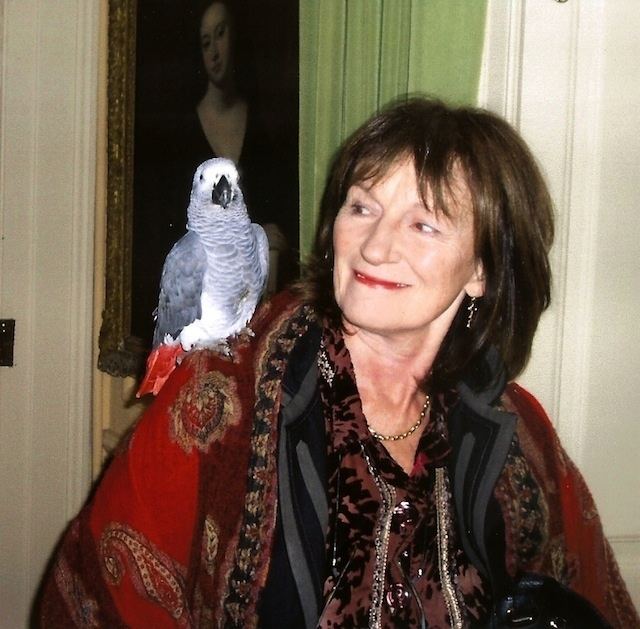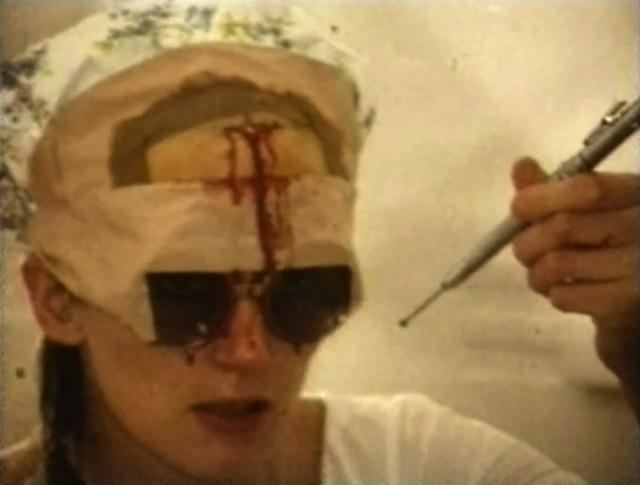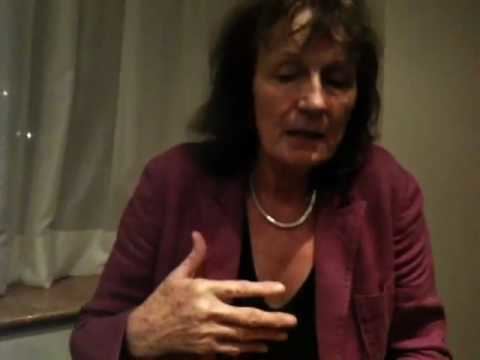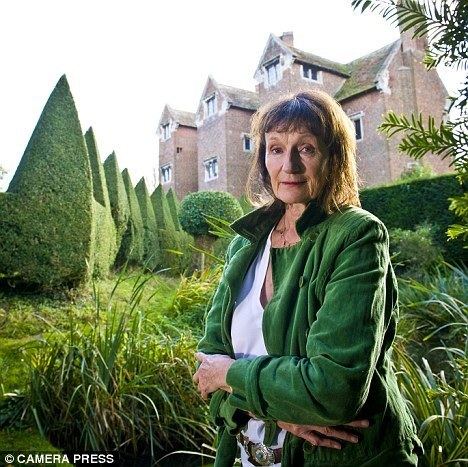Nationality British Role Scientist Other names Amanda Neidpath Education University of Oxford | Name Amanda Feilding Movies Heartbeat in the Brain | |
 | ||
Born 30 January 1943 (age 82) ( 1943-01-30 ) Spouse James Charteris, 13th Earl of Wemyss (m. 1995) Children Rock Basil Hugo Feilding Melle, Cosmo Birdie Feilding Mellen Parents Basil Feilding, Margaret Feilding | ||
Opening Plenary: Rick Doblin, Amanda Feilding & Beatriz Labate
Amanda Feilding, Countess of Wemyss and March, is an English drug policy reformer. In 1998, she founded the Beckley Foundation, a charitable trust that promotes a rational, evidence-based approach to global drug policies and initiates, directs and supports pioneering neuroscientific and clinical research into the effects of psychoactive substances on the brain and cognition. The central aim of her research is to investigate new avenues of treatment for such mental illnesses as depression, anxiety and addiction, as well as to explore methods of enhancing well-being and creativity.
Contents
- Opening Plenary Rick Doblin Amanda Feilding Beatriz Labate
- Aya2014 scientific research draulio araujo paulo barbosa amanda feilding rafa guimaraes
- Early life and education
- Trepanation
- Beckley Foundation
- Personal life
- Selection of articles
- Scholarly articles
- Policy reports
- References

Aya2014 scientific research draulio araujo paulo barbosa amanda feilding rafa guimaraes
Early life and education

Feilding is the youngest child of Basil Feilding, great-grandson of the 7th Earl of Denbigh and the Marquess of Bath, and his wife and cousin, Margaret Feilding. The Feilding family is descended from the House of Habsburg and came to England in the 14th Century. (Despite almost certainly being of Warwickshire origin, in the middle of the seventeenth century following their elevation to the aristocracy, the Feilding family began to claim descent from the Habsburgs through the counts of Laufenburg and Rheinfelden. The claim, though widely accepted at one time, including by the historian Edward Gibbon, was also the subject of ridicule. It was comprehensively debunked at the start of the twentieth century. (J H Round (1901). Studies in Peerage and Family History. p. 216.)) Since then the family intermarried into the British aristocracy and is directly descended from two illegitimate children of Charles II of England and his mistresses Barbara Villiers and Moll Davis. She grew up at Beckley Park, a Tudor hunting lodge with three towers and three moats situated on the edge of a fen outside Oxford.

From an early age, Feilding was interested in states of consciousness and mysticism. She studied Comparative Religions and Mysticism with Prof. R.C. Zaehner, Classical Arabic with Prof. Albert Hourani and sculpture.citation needed She concentrated later on learning about altered states of consciousness, psychology, physiology and, later, neuroscience.

Feilding gained notoriety in 1970 when she performed trepanation on herself, about which she made a short cult art film entitled Heartbeat in the Brain. Trepanation was part of her exploration into the effects of different techniques to alter and enhance consciousness. During this period, she wrote Blood and Consciousness, which hypothesized that changing ratios of blood and cerebrospinal fluid underlie changes in consciousness, and also described the theory of the "ego" as a conditioned reflex mechanism that controls the distribution of blood in the brain.[1] During the 1970s and 80s she painted and produced conceptual artworks associated with consciousness, which were exhibited at the ICA in London, PS1 in New York and other galleries in the US.citation needed

Feilding holds a longstanding interest in investigating consciousness for the benefit of the individual and society. She has supported research into different ways of altering consciousness from meditation to the use of psychoactive substances and trepanation.
Trepanation
Feilding learned about the ancient practice of trepanation from Bart Huges, whom she met in 1966, and who published a scroll on the topic. The hypothesis that she investigated proposes that trepanation improves cerebral circulation by allowing the "full heartbeat" to express itself inside the cranial cavity, which Feilding hypothesises cannot fully occur after the closing of the cranial bones in adulthood. To compensate for the relative loss of blood in the brain, she hypothesised that humans developed an internal system of control of blood flow in the brain, which Feilding identifies with the development of the “ego” and the origins of language. Trepanation, Feilding hypothesises, allows increased blood circulation, allowing people to achieve and sustain a slightly higher state of consciousness that she theorises children experience before their cranial bones fuse. Recent research on patients with cranial lesions in collaboration with Prof. Yuri Moskalenko has provided evidence of blood flow changes. This is part of an investigation on the change of intracranial dynamics with age, and ways to increase cranial compliance (which, they theorize, might to help limit the detrimental changes associated with aging). Through this investigation, Moskalenko and Feilding developed a non-invasive means of assessing intracranial dynamics—the ‘Cranial Compliance Monitor’.
Feilding ran for British Parliament twice, on the platform 'Trepanation for the National Health' with the intention of advocating research into its potential benefits. 35 years later, she initiated and was involved in research into the physiological effects of trepanation and cranial compliance at the Sechenov Institute for Evolutionary Physiology and Biochemistry, St. Petersburg.
Beckley Foundation
Through the Beckley Foundation, Feilding initiates, directs, and supports scientific research investigating psychoactive substances, such as cannabis, psychedelics (LSD, psilocybin, ayahuasca, DMT, 5-MeO-DMT) and MDMA. She has co-authored over 50 scientific papers in peer-reviewed journals.
Known to be one of the pioneers of the renaissance of psychedelic research, with the New Scientist calling her the “Queen of Consciousness”, she has initiated several ground-breaking research projects. Of note is a study investigating the efficacy of using psilocybin as an aid to psychotherapy in overcoming depression and nicotine addiction, a brain imaging study investigating the effects of psilocybin and MDMA on cerebral blood supply, an examination of the effects of cannabis on creativity and of the importance of the THC/CBD ratio in mental health, and the first brain imaging study investigating the effects of LSD on the brain.
Feilding has also been active in drug policy reform and was among the first to start building an evidence-base upon which new policies could be formed, arguing that benefits as well as harms should be considered. In 2007, Feilding convened the Global Cannabis Commission, producing a report authored by a group of leading drug policy analysts, which lays out a plan for possible reforms of cannabis control policies at national and international levels. 2011 saw Feilding bring together members of the Global Commission on Drug Policy Reform (a panel of world leaders and intellectuals) and political leaders from 14 countries interested in reform. Together, at the House of Lords, they launched the Beckley Foundation Global Initiative for Drug Policy Reform, a joint initiative with the All Party Parliamentary Group on Drug Policy Reform, which was set up to support the BF’s initiative to drive forward alternative approaches to drug control to create more humane, evidence-based policies that would reduce the potential harm of drugs to individuals and societies.
From these meetings, two important reports were written and published. The first, in 2012, was entitled ‘Roadmaps to Reforming the UN Drug Conventions’. It detailed ways in which the UN drug conventions could be amended to give countries greater freedom to adopt policies better suited to their individual needs. The next, in 2013, was a rigorous academic analysis by the widely-respected Institute for Social and Economic Research. It discussed the possible outcomes of decriminalising and regulating cannabis in England and Wales. Also in 2013, President Otto Perez Molina of Guatemala asked Feilding to advise on the Guatemala government's policy on drugs, and in 2015, Mark Golding, the Jamaican Minister of Justice, invited Feilding to advise him and the government in developing plans for the country’s new system of cannabis regulation. In May 2016, in response to the enforcement of the Home Office’s Psychoactive Substance Act, the Beckley Foundation published a chapter on the regulation of new psychoactive substances (NPS) from an upcoming report entitled Roadmaps to Regulation: Cannabis, Psychedelics, MDMA and NPS.
Personal life
In 1966 Feilding met and formed a relationship with Dutch scientist Bart Huges. From the late 60s she lived with Joseph Mellen with whom she had two sons, Rock Basil Hugo Feilding Mellen (born 1979) and Cosmo Birdie Feilding Mellen (born 1985).
She and Mellen separated in the mid 90s and on 29 January 1995 she married James Charteris, 13th Earl of Wemyss and March, under the Bent Pyramid in Egypt. Fielding also uses the title Lady Neidpath. The family home is Stanway House in Gloucestershire.
Selection of articles
Feilding has co-authored a number of papers and reports with the Beckley Foundation.
Scholarly articles
Carhart-Harris RL, ..., Feilding A, Nutt DJ (2016). Neural correlates of the LSD experience revealed by multimodal neuroimaging. Proceedings of the National Academy of Sciences, 113(17), 4853-4858.
Carhart-Harris RL, …, Feilding A, Nutt DJ (2016). Psilocybin with psychological support for treatment-resistant depression: an open-label feasibility study. The Lancet Psychiatry, 3(7), 619-627.
Lebedev AV, …, Feilding A, Nutt DJ, Carhart-Harris RL (2016). LSD-induced entropic brain activity predicts subsequent personality change. Human Brain Mapping, 37(9), 3203-3213.
Tagliazucchi E, …, Feilding A, Nutt DJ, Carhart-Harris RL (2016). Increased Global Functional Connectivity Correlates with LSD-Induced Ego Dissolution. Current Biology, 26(8), 1043-1050.
Soler J, Elices M, Franquesa A, Barker S, Friedlander P, Feilding A, Pascual JC, Riba J (2016). Exploring the therapeutic potential of ayahuasca: acute intake increases mindfulness-related capacities. Psychopharmacology, 233(5), 823-829.
Roseman L, Leech R, Feilding A, Nutt DJ, & Carhart-Harris RL (2014). The effects of psilocybin and MDMA on between-network resting state functional connectivity in healthy volunteers. Frontiers in human neuroscience, 8, 204.
Carhart-Harris RL, …, Feilding A, & Nutt DJ (2014). The Effects of Acutely Administered 3, 4-Methylenedioxymethamphetamine on Spontaneous Brain Function in Healthy Volunteers Measured with Arterial Spin Labeling and Blood Oxygen Level–Dependent Resting State Functional Connectivity. Biological psychiatry, S0006-3223(14)00005-5
Schafer G, Feilding A, Morgan CJ, Agathangelou M, Freeman TP, & Curran HV (2012). Investigating the interaction between schizotypy, divergent thinking and cannabis use. Consciousness and cognition, 21(1), 292-298.
Policy reports
Room, Robin; Fischer, Benedikt; et al. (2008). "Cannabis Policy: Moving Beyond Stalemate". Beckley Foundation. September.
Room, Robin (2012). “Roadmaps to Reformation: The UN Drug Conventions”. Beckley Foundation.
Bryan, M; et al. (2013). “Licensing and regulation of the cannabis market in England and Wales: Towards a cost-benefit analysis”. Beckley Foundation.
Feilding, A and Singleton, N. (2016). “Roadmaps to Regulation: New Psychoactive Substances”. Beckley Foundation.
